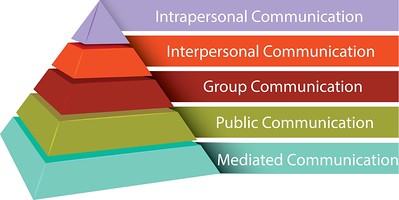Parallelism Public Speaking
When it comes to public speaking, have you ever wondered how to make your words flow smoothly and captivate your audience? Well, let’s dive into a technique called parallelism in public speaking! Parallelism, a powerful tool used by great speakers, adds rhythm, balance, and impact to your message. By using parallel structure, you can enhance your speeches and grab your listeners’ attention.
So what exactly is parallelism? It’s a linguistic technique where similar grammatical forms or structures are used in a repetitive and organized manner. In simpler terms, it’s like adding a catchy beat to your speech by using balanced phrases or repeating certain patterns. By incorporating parallelism into your public speaking, you can make your message more memorable and engaging.
Parallelism can take different forms, such as repeating words, using similar sentence structures, or creating lists with consistent grammatical patterns. It helps you create a sense of rhythm and balance, making your speech sound more polished and professional. Are you ready to learn how to incorporate parallelism into your own public speaking? Let’s get started!

Parallelism in Public Speaking: Mastering the Art of Effective Communication
Public speaking is a powerful tool that allows individuals to deliver their message and influence others. Whether it’s a presentation, a speech, or a business pitch, the way we communicate can greatly impact the effectiveness and impact of our message. One technique that can elevate the quality of our speeches is parallelism. In this article, we will explore the concept of parallelism in public speaking, its benefits, and how to effectively incorporate it into your speeches.
Understanding Parallelism: A Powerful Communication Technique
Parallelism, also known as parallel structure or parallel construction, is a rhetorical device that involves using similar grammatical structures or patterns to create balance and rhythm in speech. It adds clarity, emphasis, and elegance to our words, capturing the attention of the audience and leaving a lasting impression.
Parallelism can be applied to various aspects of public speaking, including sentence structure, word choice, and the organization of ideas. By utilizing parallelism, speakers can create memorable phrases, highlight key points, and engage their audience on a deeper level. It brings an element of harmony and symmetry to our speeches, making them more cohesive and impactful.
Imagine listening to a speech where the speaker repeats the same sentence structure throughout, using parallel phrases. The repetition creates a musical quality that captivates the audience and reinforces the speaker’s message. Whether it’s a political speech, a TED talk, or a sales pitch, parallelism adds a unique flair to public speaking.
The Benefits of Using Parallelism in Public Speaking
There are several benefits to incorporating parallelism into your public speaking endeavors. First and foremost, it enhances clarity and comprehension. By using parallel structure, you provide a clear and structured framework for your audience to follow, ensuring that your message is easily understood.
Parallelism also helps to emphasize important points and create a more engaging experience for your audience. By repeating key phrases in a parallel structure, you draw attention to them and make them more memorable. This technique allows you to strategically highlight the most crucial aspects of your speech, ensuring that they are not easily forgotten.
Additionally, parallelism adds a touch of artistry to your speeches. It helps to create a rhythm and flow that keeps your audience engaged and interested. Just as a skilled musician uses variations in rhythm and melody to captivate their listeners, a seasoned speaker utilizes parallelism to evoke emotions and make a lasting impact.
Tips for Incorporating Parallelism in Your Speeches
Now that we understand the power and benefits of using parallelism in public speaking, let’s explore some practical tips for incorporating this technique into your speeches:
- Utilize parallel sentence structure: Make use of parallel sentence structures by repeating a grammatical pattern or arrangement. For example, “I came, I saw, I conquered” or “She excels in singing, dancing, and acting.”
- Repeat key phrases: Identify key points in your speech and repeat them using parallel structure to emphasize their importance. This repetition will reinforce the message and ensure it resonates with your audience.
- Create symmetry: Organize your speech in a balanced manner by using parallelism to present contrasting ideas or similar concepts. This creates a sense of harmony and facilitates easy comprehension for your audience.
Remember, parallelism is not about mindlessly repeating the same structure but rather using it strategically to reinforce your message and create a memorable impact. Practice incorporating parallelism into your speeches, and soon you’ll witness the transformative power it has on your communication skills.
Parallelism in Public Speaking: Tips for Engaging and Impactful Speeches
Parallelism in public speaking is an effective technique that can elevate the impact and persuasiveness of your speeches. By creating balance, rhythm, and emphasis through parallel structure, speakers can engage their audience and deliver memorable messages. In this section, we will delve deeper into the tips and strategies for utilizing parallelism in public speaking.
The Power of Parallel Structure in Public Speaking
Parallel structure, also referred to as parallelism, involves using similar grammatical patterns or structures for phrases, sentences, or ideas. By creating a sense of balance and repetition, parallelism enhances the clarity, impact, and memorability of your speech. The power of parallel structure lies in its ability to engage your audience, facilitate comprehension, and convey your message effectively.
When used effectively, parallelism adds rhythm and musicality to your speech, capturing the attention of your audience. It creates an organized and structured framework that makes it easier for listeners to follow your ideas. Whether you’re delivering a persuasive speech or a business presentation, incorporating parallel structure can greatly enhance the effectiveness of your communication.
The Benefits of Using Parallelism in Public Speaking
The benefits of utilizing parallelism in public speaking are numerous. Firstly, parallel structure enhances the clarity of your message. By employing parallel phrases or sentences, you create a pattern that helps your audience understand and remember your main points. This clarity ensures that your message is delivered effectively and leaves a lasting impression.
Secondly, parallelism adds emphasis and impact to your speech. By repeating key phrases or ideas using parallel structure, you draw attention to them and underscore their importance. This repetition acts as a mnemonic device, making it easier for your audience to retain and recall the key messages of your speech.
Furthermore, parallelism brings a sense of elegance and artistry to your public speaking. By incorporating parallel structure, you create a harmonious and rhythmic flow in your speech. This captivates your audience and enhances the overall experience of listening to your message.
Tips for Mastering Parallelism in Public Speaking
To make the most of parallelism in your speeches, consider the following tips and strategies:
Vary your sentence structures: Experiment with different parallel structures to add depth and variety to your speech. Utilize parallel phrases, clauses, or even entire sentences to create a dynamic and engaging presentation.
Use parallelism for emphasis: Identify the key points or ideas that you want to highlight in your speech. Repeat them using parallel structure to create impact and ensure they are easily remembered by your audience.
Balance contrasting ideas: Employ parallelism to create balance by presenting contrasting ideas in a parallel structure. This helps to convey your message effectively and facilitates comprehension for your audience.
Practice and refine: Like any other aspect of public speaking, mastering parallelism requires practice. Rehearse your speech to ensure that the parallel structures flow smoothly and enhance the overall impact of your message.
Incorporating parallelism into your public speaking repertoire can greatly enhance the effectiveness of your speeches. By utilizing parallel structures, you can engage your audience, convey your message with clarity and impact, and leave a lasting impression. Experiment with parallelism, practice with intention, and watch as your communication skills soar to new heights.
Key Takeaways – Parallelism in Public Speaking
- Parallelism in public speaking involves using similar grammatical structures in consecutive phrases or sentences.
- It enhances the clarity and impact of your message by creating a rhythm and balance in your speech.
- Parallelism can be achieved through repetition, parallel structure, or using balanced pairs of ideas.
- Using parallelism can make your speech more memorable and help an audience better understand and retain your message.
- Practicing parallelism can improve your overall speaking skills and make you a more effective communicator.
Frequently Asked Questions
In public speaking, parallelism is an important technique that can enhance your delivery and engage your audience. It involves using similar grammatical structures or patterns to convey a sense of balance and rhythm in your speech. Here are some commonly asked questions about parallelism in public speaking:
Q: How can parallelism improve my public speaking?
A: Parallelism can make your speech more impactful by creating a sense of rhythm and balance. It helps to emphasize key points, making them more memorable for your audience. By using parallel sentence structures, such as repeating key phrases or using consistent grammatical patterns, you can enhance the flow and coherence of your speech. This can make it easier for your audience to follow your message and stay engaged.
Additionally, parallelism can add variety to your speech and make it more interesting to listen to. It can help break up the monotony of repetitive structures and keep your audience’s attention. Parallelism also adds a touch of sophistication to your speaking style, showcasing your command of language and your ability to create well-crafted sentences.
Q: How can I incorporate parallelism into my speech?
A: There are several ways to incorporate parallelism into your speech. Firstly, you can use parallel sentence structures by repeating key words or phrases throughout your speech. For example, if you’re giving a motivational speech, you could say, “Believe in yourself, trust in your abilities, and pursue your dreams.”
Another way to use parallelism is by using consistent grammatical patterns. For instance, you can choose to start each sentence with a similar phrase or use the same verb tense throughout your speech. This creates a sense of symmetry and balance in your message. Remember to vary your sentence structures as well, so your speech doesn’t become monotonous.
Q: Can you give me an example of parallelism in a famous speech?
A: Certainly! In Martin Luther King Jr.’s famous “I Have a Dream” speech, he utilized parallelism to great effect. One memorable example is the repeating phrase, “I have a dream.” By consistently using this phrase, King emphasized his vision of equality and justice, while also creating a powerful and rhythmic impact on his audience.
Parallelism can also be seen in other parts of the speech, such as when King said, “With this faith, we will be able to work together, to pray together, to struggle together, to go to jail together, to stand up for freedom together.” The repetition of “together” reinforces the idea of unity and solidarity, making the message more persuasive and memorable.
Q: Is it possible to overuse parallelism in a speech?
A: While parallelism can be a powerful tool, it is important to use it judiciously. Overusing parallelism can make your speech sound repetitive and monotonous, which may lead to a loss of engagement from your audience. It’s important to strike a balance between using parallelism to enhance your message and maintaining variety in your speech.
One way to avoid overusing parallelism is to vary your sentence structures. Instead of using the same sentence pattern over and over again, experiment with different grammatical structures to keep your speech fresh and interesting. It’s also helpful to be mindful of the overall flow and pacing of your speech. If you notice that your sentences are becoming too similar, try to introduce some variation to maintain your audience’s attention.
Q: Can parallelism be used in other forms of communication besides public speaking?
A: Absolutely! Parallelism is not limited to public speaking and can be utilized in various forms of communication. It can be employed in writing, such as essays, articles, and even poetry, to create a sense of rhythm and balance. Parallel structures can also be used in visual design, like infographics or presentations, to make information more visually appealing and easier to comprehend.
Beyond the realm of formal communication, parallelism can be found in everyday conversations. People often use parallel sentence structures to convey emphasis and create a memorable impact, whether it’s in a casual conversation or sharing a story with friends. Parallelism is a versatile technique that can enhance communication in many different contexts.
Summary
When you speak in public, using parallelism can make your speech more effective. Parallelism means using similar sentence structures or repeating key words or phrases. It helps your audience understand and remember your message.
By using parallelism, you can emphasize important ideas and create a sense of rhythm in your speech. This technique makes your speech more engaging and persuasive. Whether you’re giving a presentation or speaking in a debate, parallelism is a powerful tool that can enhance your public speaking skills.


